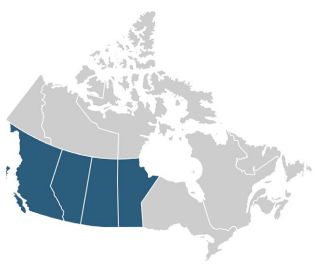Western Canada basics
Western Canada refers to a large expanse of four provinces across the southwest of the country: British Columbia on the Pacific Coast, bordered by Alberta along the Rocky Mountains, and further east the prairie provinces of Saskatchewan and Manitoba.

Western Canada is varied in its landscape and geography. British Columbia has a long coastline and many islands in the Pacific Ocean, with extensive fisheries and port traffic to Asia. British Columbia and Alberta are also famous for their lofty peaks and world-class ski hills. The Great Plains spread through the centre of Canada take up much of Alberta, Saskatchewan, and Manitoba, creating flat, fertile grasslands that produce much of the world’s grain and other essential agricultural crops.
Climate
Interior regions of Canada experience cold, snowy winters with temperatures occasionally dropping below -30 degrees Celsius from cool continental winds. Northern areas tend to have longer, colder winters, which is why many population centres in Canada tend to be located in the southern regions of most provinces. Winters on the coast of British Columbia in cities like Vancouver and Victoria are more temperate due to the coastal influence, usually not dropping below 0 degrees Celsius, but receiving plenty of winter rain.
In contrast, summers get very warm in most of these regions; clear skies in Saskatchewan, Manitoba, and Alberta make for very sunny days and summer the coastline of British Columbia is temperate and experiences more coolness
